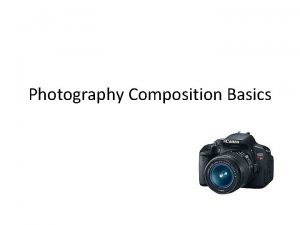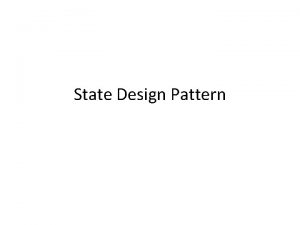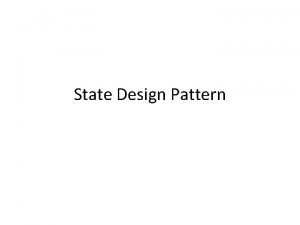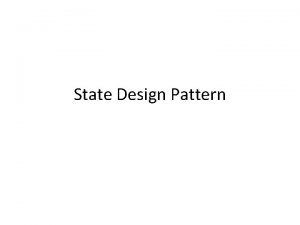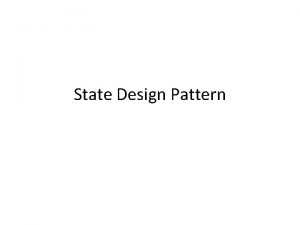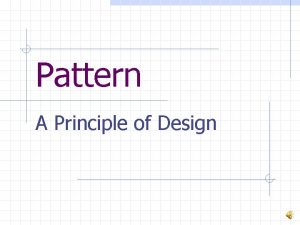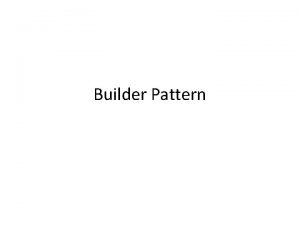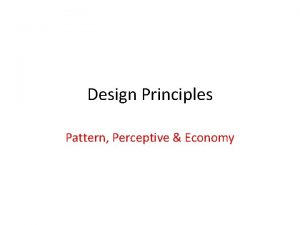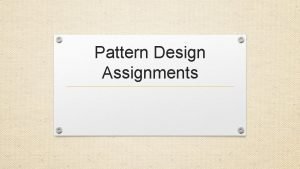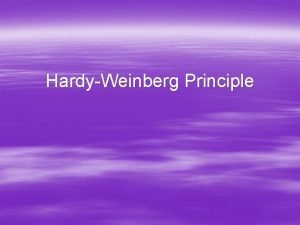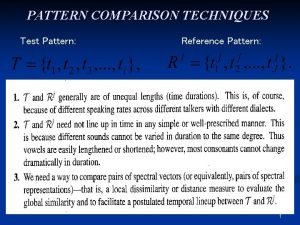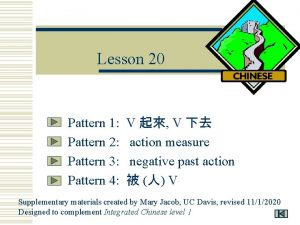Pattern A principle of design in which the




















- Slides: 20

Pattern • A principle of design in which the repetition of elements or combination of elements forms a recognizable organization

Motif • The two or three dimensional unit that is repeated to form a pattern

Planned Pattern • A consistent, orderly repetition of motifs • (can be found in nature or created by an artist) • Planned patterns include row, grid, half drop, radial, alternating, and border.

Row Border / Band

Grid Alternating

Half-drop • Each row is evenly spaced to half the height of its preceding row.

Radial Random A pattern created by chance without orderly organization

Visual Rhythm • The Repetition of an element to make a work seem active. • You sometimes “feel” rhythm in a work of art as much as you see it. • Artists use Rhythm to make an artwork come alive. • The VISUAL “Beat” in a work of art • Produced by repeating one or several units/motifs of a design which helps create compositional movement.

What element / motif is repeating?

Types of Rhythm Regular Rhythm - Created by a repeated pattern that is predictable and continuous Grid pattern Row pattern Border/Band pattern

Types of Rhythm Flowing Rhythm - Large movement that sweeps across the entire artwork and ties things together Flowing rows Radial pattern

Types of Rhythm Alternating Rhythm - Created by a pattern that switches back and forth to add variety to the movement

Types of Rhythm Progressive Rhythm - Created by a repeating pattern whose motif changes in a predictable or regular way (ie: increases/decreases)

Types of Rhythm Unexpected Rhythm - Created by an irregular, jerky or spontaneous repetition and pattern Random Pattern

Movement • The principle of art used to • Guide the viewer’s eye through the picture • Create the look and feel of action • Artists create movement through the careful blending of elements

Compositional Movement • A path that the viewer’s gaze is directed to follow because of the arrangement of elements in an artwork. • Artists may use a circular or linear direction for the viewers eyes to follow

Linear Movement

Circular Movement 3 -D Artists also create movement in the direction in which he/she wants the viewer to walk around the work.

Pattern/Rhythm/Movement Morph Animation Project Each student will create a series of drawings that morph in shape, color, pattern, and or texture while creating visual rhythm and movement All the drawings will be linked together to create a class animation Animation Example

• Composition • • Single Project Example Drawing is clean and neat Stray marks are not visible Drawings line up well with each other Skill • • • Interesting use of pattern, rhythm and movement Creative Morph within object Craftsmanship • • Elements of design are used to create a complex morph Eye movement is created throughout the drawings Creative Expression • • • Animation Morph Rubric Smooth transition from one drawing to the next Application of pattern, rhythm and movement is sophisticated Objectives • • Minimum of 10 frames Apply Pattern, Rhythm and Movement to the Morph Drawings Create a complete morph that has a beginning and an ending (must be the template shape) Drawings are finished in color or value
 Viewpoint composition photography
Viewpoint composition photography Hát kết hợp bộ gõ cơ thể
Hát kết hợp bộ gõ cơ thể Slidetodoc
Slidetodoc Bổ thể
Bổ thể Tỉ lệ cơ thể trẻ em
Tỉ lệ cơ thể trẻ em Gấu đi như thế nào
Gấu đi như thế nào Chụp tư thế worms-breton
Chụp tư thế worms-breton Hát lên người ơi
Hát lên người ơi Kể tên các môn thể thao
Kể tên các môn thể thao Thế nào là hệ số cao nhất
Thế nào là hệ số cao nhất Các châu lục và đại dương trên thế giới
Các châu lục và đại dương trên thế giới Công thức tính độ biến thiên đông lượng
Công thức tính độ biến thiên đông lượng Trời xanh đây là của chúng ta thể thơ
Trời xanh đây là của chúng ta thể thơ Mật thư anh em như thể tay chân
Mật thư anh em như thể tay chân Phép trừ bù
Phép trừ bù độ dài liên kết
độ dài liên kết Các châu lục và đại dương trên thế giới
Các châu lục và đại dương trên thế giới Thể thơ truyền thống
Thể thơ truyền thống Quá trình desamine hóa có thể tạo ra
Quá trình desamine hóa có thể tạo ra Một số thể thơ truyền thống
Một số thể thơ truyền thống Cái miệng nó xinh thế
Cái miệng nó xinh thế
